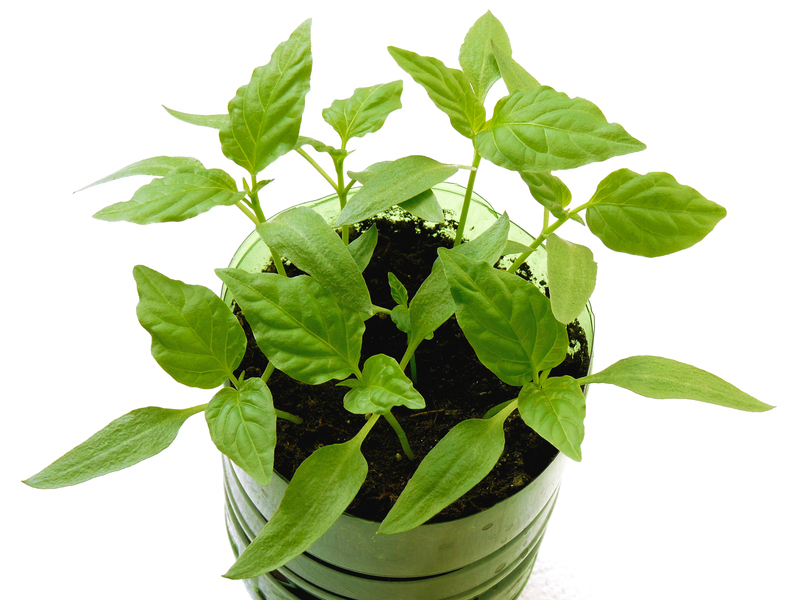Create Sustainable Learning Spaces with Comprehensive Recycling Tips
Looking to create sustainable learning spaces? You're not alone! As educational institutions, offices, and even at-home learning zones evolve, there's rising interest in adopting environmentally friendly practices. Embracing a sustainable learning environment benefits not just the planet, but also encourages students, teachers, and families to become more eco-conscious in their daily lives.
This comprehensive article will guide you through actionable and creative recycling tips to establish eco-friendly educational environments. We'll discuss why sustainability matters, explore innovative recycling solutions, and highlight essential best practices for all types of learning spaces -- from classrooms and libraries to home study nooks.

Why Build Sustainable Learning Spaces?
Sustainability in education is about more than switching off lights or using less paper. It's about creating learning environments where environmental practices are integrated into every aspect of the physical and cultural setting. Sustainability inspires learners to become responsible global citizens, fostering awareness of waste reduction, resource conservation, and environmental stewardship.
- Environmental Impact: Reducing energy use, cutting down on waste, and encouraging recyclable materials helps lower the carbon footprint of your space.
- Educational Value: Teaching students about recycling and sustainable choices empowers them with lifelong ecological knowledge and values.
- Healthy Spaces: Proper recycling improves indoor air quality and reduces clutter, creating cleaner and more pleasant environments.
- Cost Savings: Implementing recycling and sustainable practices can lower utility bills and decrease the need for consumable supplies.
Key Elements of a Sustainable Learning Environment
To create sustainable learning spaces, you'll need more than just recycling bins. Here are some key components:
- Comprehensive waste management plans that include recycling, composting, and reducing single-use items.
- Eco-friendly classroom materials such as recycled paper, non-toxic supplies, and durable, reusable items.
- Energy and water-efficient facilities featuring LED lights, smart thermostats, and low-flow fixtures.
- Curricular integration of sustainability topics, encouraging learners to take part in environmental projects.
Comprehensive Recycling Tips for Sustainable Learning Spaces
Ready to take action? Here are the most effective and innovative recycling tips for sustainable educational environments:
1. Start with Waste Audits
Begin by understanding what kinds of waste your learning space generates. Sort through trash bins for a few days and note common items -- paper, plastics, electronics, food waste, and packaging. This audit helps you identify key areas for recycling improvements and set measurable sustainability goals.
- Enlist students or staff in the audit for engaged, hands-on learning.
- Use findings to prioritize which recycling streams to establish first.
2. Establish Clearly Marked Recycling Stations
Visibility is crucial. Place clearly labeled recycling bins in convenient locations -- near entrances/exits, printers, cafeterias, and classrooms. Use color-coded signs and infographics to educate users about what belongs in each bin.
- Include separate bins for paper, plastics, metals, glass, and electronic waste.
- Ensure bins are emptied regularly and maintained in clean condition.
- Offer explanations in multiple languages if your learning community is diverse.
3. Recycle Beyond Paper: Include E-Waste, Batteries, and More
Modern learning spaces rely heavily on electronics. Don't overlook e-waste recycling -- collect broken calculators, old tablets, cables, and used batteries in designated bins. Partner with local recycling centers or retailers offering e-waste drop-off programs.
- Set up specific collection days for electronics or batteries.
- Organize "tech take-back" events in collaboration with manufacturers or recycling firms.
4. Incorporate Composting for Organic Waste
A truly sustainable learning environment goes beyond recycling. Composting food scraps and biodegradable materials from cafeterias and lunchboxes can drastically reduce landfill waste.
- Install countertop composters in staff rooms, cafeterias, or outdoor spaces.
- Use posters and workshops to train students and staff on what can and cannot be composted.
- Partner with local farms or use the compost in school gardens.
5. Reuse and Upcycle Materials Creatively
Recycling doesn't stop with tossing items into bins. Reusing and upcycling materials breathes new life into waste and provides creative project opportunities:
- Transform cardboard boxes into organizers or art projects.
- Reuse jars, plastic containers, and bottles for classroom storage or science experiments.
- Upcycle old jeans or fabric scraps into cushions for reading nooks.
6. Encourage a Paperless Environment
Reducing paper use is a foundational strategy for sustainable learning. Digital documents, presentations, and e-books should be prioritized whenever possible.
- Adopt learning management systems (LMS) and cloud drives for assignments and communications.
- Set printer defaults to double-sided and black-and-white copies.
- Encourage students to submit homework digitally and use collaborative online platforms.
7. Hold Recycling Drives and Green Challenges
Boost engagement with monthly recycling drives or friendly competitions. Reward classes or teams who collect the most recyclables or demonstrate outstanding environmental commitment.
- Host "Green Week" or "Eco Day" events featuring recycling quizzes, art projects, and clean-up campaigns.
- Display progress on a visible bulletin board to celebrate achievements and motivate ongoing participation.
8. Educate and Empower Your Learning Community
The backbone of sustainable learning spaces is ongoing environmental education. Integrate recycling concepts into curricula at every grade level and encourage critical thinking about consumption and waste.
- Invite guest speakers, such as local recycling experts or environmental activists.
- Organize field trips to recycling centers or eco-friendly businesses.
- Have students create posters or videos promoting recycling tips and sustainability awareness.
Eco-Friendly Classroom Materials and Supplies
Choosing sustainable school supplies can dramatically impact the environmental footprint of your learning space. Here are top suggestions:
- Recycled Notebooks and Paper: Opt for 100% post-consumer recycled content.
- Refillable Pens and Markers: Reduce plastic waste by choosing refillables over disposables.
- Non-toxic Art Supplies: Purchase watercolor and markers made from natural materials.
- Reusable Water Bottles and Lunchboxes: Discourage single-use plastics by providing or encouraging reusable options.
- Second-Hand Furniture: Give new purpose to gently used desks, chairs, and shelves through donation or thrift purchases.
Design Considerations for Sustainable Learning Spaces
Creating a sustainable educational environment starts with smart design choices. Whether you're managing a large school, a small learning center, or a home study spot, consider these eco-friendly features:
Lighting and Energy Efficiency
- Utilize natural light as much as possible to reduce electricity use and boost mood.
- Install LED or CFL bulbs and encourage participants to turn off lights when not needed.
Ventilation and Air Quality
- Use non-toxic paints and furnishings to improve air quality.
- Introduce indoor plants, which help filter air naturally and create a calming atmosphere.
Low Waste Cafeterias
- Encourage reusable utensils, trays, and containers.
- Eliminate single-use condiment packages and encourage bulk dispensers.
Flexible Furniture
- Invest in modular desks and chairs that can be adapted and reused for multiple purposes.
- Choose materials that are recyclable at the end of their lifespan.
Involving Students in the Journey
The most effective sustainable learning spaces are those where everyone gets involved. Empower students to take leadership roles in sustainability initiatives. For example:
- Form a "Green Team" or Eco-Club to monitor recycling efforts and suggest improvements.
- Enable students to conduct regular mini-audits of classroom waste and share results.
- Encourage student-led recycling awareness campaigns within the school or online.
Measuring and Celebrating Progress
Tracking your progress is essential in fostering a culture of sustainability. Consider these strategies:
- Keep Recycling Records: Monitor the volume of paper, plastics, and other materials recycled on a monthly basis.
- Set and Review Goals: Aim to reduce waste by a certain percentage each semester or school year.
- Celebrate Successes: Host award ceremonies for top recyclers or classes making significant environmental strides.

Overcoming Common Challenges
Transitioning to a sustainable learning space can face a few hurdles. Here's how to address them:
- Lack of Awareness: Provide ongoing training and communication about the "why" and "how" of recycling.
- Contamination of Recyclables: Use clear signage and education to help everyone sort materials correctly.
- Funding Limitations: Prioritize low-cost or grant-funded initiatives, such as student-led audits and creative upcycling.
- Resistance to Change: Highlight success stories, involve stakeholders at every step, and demonstrate the tangible benefits.
Conclusion: A Greener Future for Learning Spaces
Building sustainable learning spaces is an ongoing journey demanding creativity, commitment, and collaboration. By implementing comprehensive recycling tips and fostering a culture of sustainability, schools, libraries, offices, and homes can all contribute to a healthier planet -- and educate the environmental leaders of tomorrow. Start with small changes, measure your impact, and inspire others along the way. Every eco-friendly action counts in shaping a brighter, greener future.
Ready to transform your learning environment? Create sustainable learning spaces today with these comprehensive recycling strategies, and become a role model for eco-friendly education.